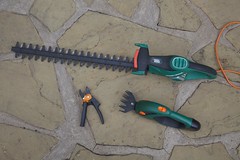Acers & Japanese Maples
Maple' is an alternative common name for 'acer'. We have used very many plants from the acer genus in our garden design at 'Four Seasons' and most are Japanese maples.
We grow maples/acers especially for their beautiful coloured foliage.
Japanese maple are versatile. They have unique green or red, fine textured palm shaped leaves and interesting growth habit with muscular-looking multiple trunks. Japanese maples have amazing autumn colours from bright yellow through orange and red, and is often striking, even on trees grown in total shade.
All the acer cultivars have in common their sharply pointed leaves and yet there is a huge variety of leaf shape, size, colour and texture amongst the different cultivars. Japanese maples are usually categorized according to leaf type.
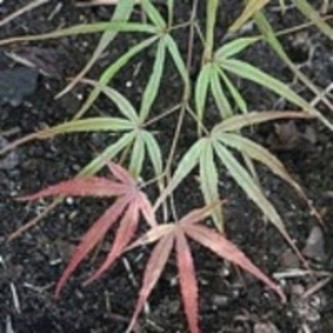
We now have a collection totalling more than 125 acer shrubs and small trees. They are happy with our slightly acidic soil and make lovely companions for our other groups of plants including azaleas and ornamental conifers.
They also help to contribute to the oriental theme in many areas of our landscaping.
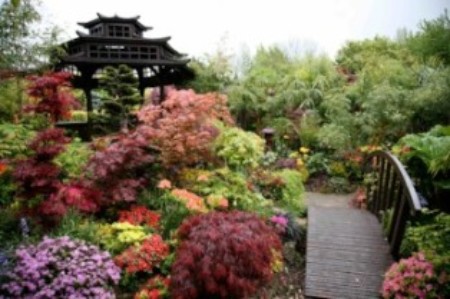
We plant acers in all areas of the garden. Our main rear garden is semi-sheltered, faces south and is fortunately on a gentle downward slope. No doubt the slope suits the acers since the improved water drainage helps to prevent the soil from getting too waterlogged.

Although these acers are in an open position in our garden, they are semi sheltered due to the garden being somewhat 'sunken' into the landscape. The garden is at a lower level than our house on one side, there are high boundary fences on two sides and on the fourth side there are high trees and ascending ground.
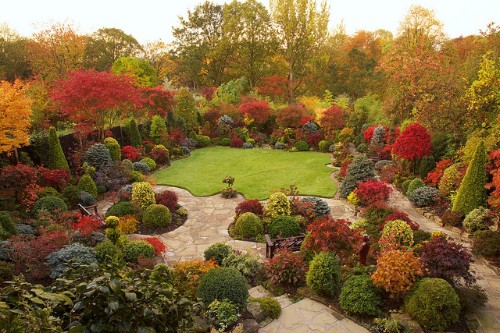
We have slightly-acid clay soil. The maples have never shown any sign of need for fertiliser feeding. The clay is apparently full of the necessary nutrients for our maples.
However, they may have benefited from occasional fertiliser that we have given to other neighbouring plants e.g Miracle-gro slow release granules for camellias and azaleas, summer feeding of begonias and other perennials, and occasional inorganic Growmore granules around various evergreens that we annually prune.

All our acers are pruned regularly to keep them to the shape and size that we would like. Many acers would grow to more than ten of metres in height but only if you you let them!
The acers in this photo are more than 26 years old and selected plants, such as these, have their growing tips pinched out in spring to keep them compact.
If necessary, occasional selective pruning is done at any time of the year. Our main pruning is in winter, during December until early February, before the sap is rising. However, winters in the UK can be very variable and in prolonged severe winters the our main pruning has continued until late February.
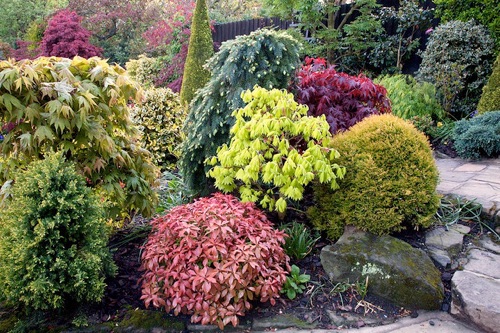
Our acers are all planted in the ground and none are in pots. They proved their hardiness when they survived the recent record cold winters with temperatures as low as minus 15C.
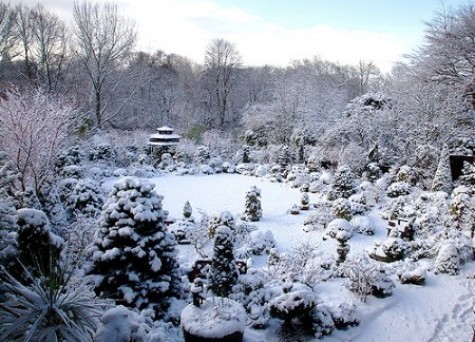
Apart from their wonderful leaf colour, acers give us movement in the garden from spring to summer.
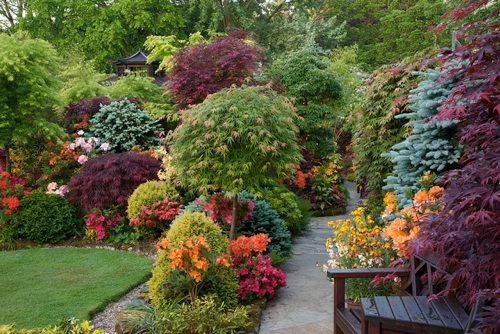
In our planting scheme we particularly like to contrast acer foliage against the evergreen plants such as conifers, acuaba and ilex.
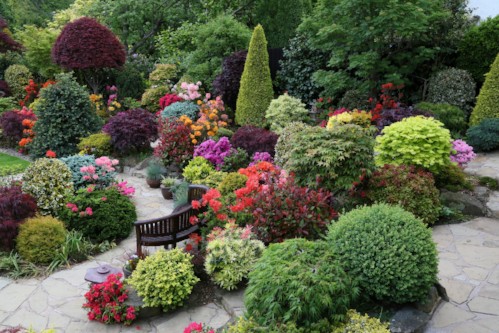
Some of the cultivars have red stems which are beautiful, particularly in winter and early spring, and many are especially spectacular in the autum.
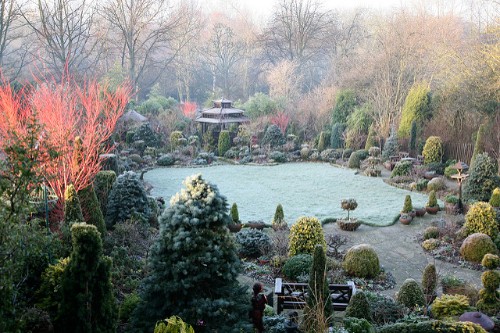
Foliage colour of the Japanese maples/acers change with the season. Acers provide our garden with exciting colour and interesting new growth in spring ..
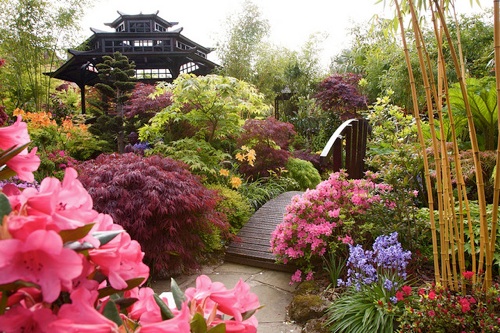
... and dramatic colour change late in the year when they become our 'autumn flowers'.
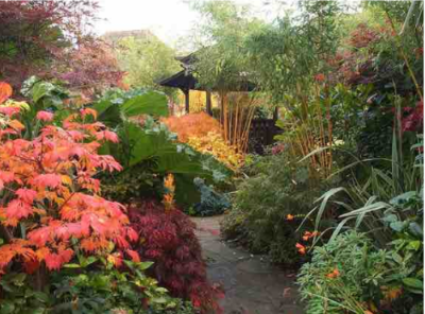
Frequently asked questions about acers
- Acers in pots
We are self taught and have found what works well for us in our garden........it is very likely that some things we do would not fit within the usual RHS guidelines!
We very much enjoy growing acers including Japanese maples. We have met many people who have been very happy to grow all their acers in pots however, none of our acers are grown in pots. We plant our acers in all areas of the garden and more than 95% of our acers came through the recent severe winters unscathed. Although overall we have found our acers have been quite cold hardy, one year we found some of our acers with very new acer leaves did not like very severe late spring air frosts (around minus 6C) in May! We find that many purple and green foliage varieties and also the paler acer senkaki are usually happy in the 'full sun' of an average UK summer of recent years (plenty of rain and not much sun!)
Although these acers are in an open position in our garden, they are semi sheltered due to the garden being somewhat 'sunken' into the landscape. The garden is at a lower level than our house on one side, there are high boundary fences on two sides and on the fourth side there are high trees and ascending ground. Our soil is slightly acid and our acers seem happy with this.
We have plenty of garden space and we have tended to be wary about pots because of the extra risk of the acers drying out and the extra risk of frost damage to the roots in winter. Our choice would be to use terracotta or glazed pots. We have self-set acer seedlings growing in various areas of our garden and they seem to be doing best where the soil is slighted compacted rather than very friable.
Regarding acers in pots, these sites probably will give you all the extra information you require:
RHS
gardeners world - Pruning acers
We would refer you to our page: Pruning acers and Japanese maples
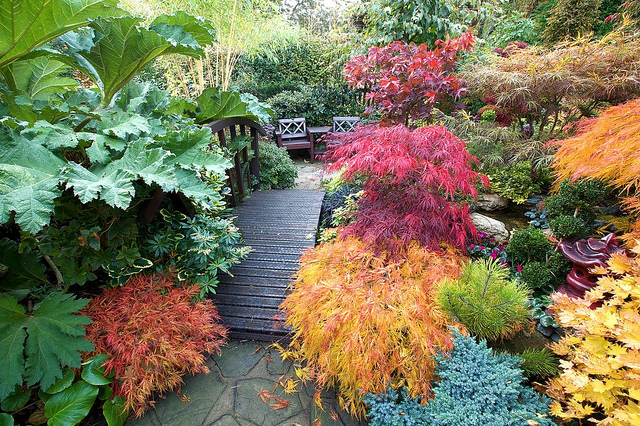
Four Seasons Sitemap
© All Rights Reserved
Please do not download our photo images from this website to use for publication or any commercial reason without our permission.
Images may not be copied, reproduced, published or distributed in any medium without the expressed written permission of the copyright holder.




